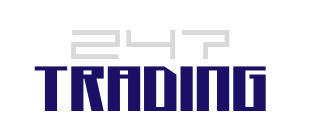It’s true, passing a funded trader challenge can unlock doors in your trading career, with a potential to make you lots of money.
But to do really well, to pass these challenges, become funded, and eventually earn real money, you really need to understand the significance of the drawdown rules.
Don’t forget that these rules are put in place by prop trading forms not only to safeguard your trading capital(again, it’s their money), but to help you as well become a better overall trader, once you master an effective risk management strategy.
If there is one key takeaway from this article, it’s that never underestimate the importance of the drawdown rules. Not my proudest achievement, but I admit I once failed one challenge from Apex Trader Funding by underestimating this.
The good thing that happened with my first failure was that I learned from it, and with extra discipline and risk management, finally passed the challenge.
And we at 247trading, are here to help guide you to become the next rockstar traders out there!
You Will Fail Your Prop Firm Challenge Because You Underestimated the Drawdown Rules
If you are reading this now, you must have been trading for a while, and you’ve already managed to learn how to ride market fluctuations. And as a trader myself, I know the feeling of wanting to push yourself even further.
You might think that you already know what you’re doing, and maybe it’s time to join a prop trading challenge.
Who wouldn’t grab a chance to have access to a huge trading capital, and be the ticket you are looking for to change your life? I know, I actually joined one.
You begin the challenge, and it’s business as usual as you continue winning most of your trades, making steady progress.
Of course, you can’t win them all, and after a string of losses, and before you realize it, BOOM it hits you. You get a notification that you are now disqualified from the trading challenge.
“Why?” you ask, “My strategies were working, I WAS WINNING, I AM AHEAD. What happened?”
Only then that most traders will finally realize what went wrong, something most traders will realize when it’s too late: they have overlooked the drawdown rules, which unfortunately included me at one point.
That is why here at 247trading, we believe in equipping you with all the necessary knowledge, and this article will be a new addition to your trading toolkit. We’ll discuss why it is crucial to mind and respect these drawdown rules, which differ between prop trading firms.
As someone who has been through the Apex Trader Funding Challenge, I assure you, understanding these rules could make or break your challenge outcome, regardless of any trading challenge you are doing. Let’s jump in.
Understanding Drawdown Rules
We’re all here right now because we want to have access to funds not immediately available to us, things that will make us realize that dreams do come true.
Of course, all of these are not instant, we need to work hard for it and prove that we deserve to be entrusted with huge amounts of money(not our money, mind you) for us to play with, and make money with.
This is where these Funded Trader Challenges come in.
One of the rules that have ended many aspiring traders’ challenges is the Drawdown Rules. You see, most of traders focus on the money-making aspect of trading and these challenges, often neglecting the fact that we can’t all our trades. Most of us don’t have a strategy in place when things are not going our way.
These rules, plain and simple, are safety nets prop firms employ to manage risk, it’s their money after all. They set a limit, typically a chunk of your trading capital, a limit to the amount you can lose. If the equity in your trading account sinks below this level, then it’s game over.
At first glance, you’d think that this particular rule is there to hinder your progress. On the contrary, drawdown rules are in place to ensure your long-term trading success. It helps you develop your risk management skills.
To make things clearer, I’ll show you a couple of examples:
You’re in a prop firm challenge with a trading account of $50,000. The firm has a maximum drawdown limit of 10%. If your equity tumbles to $45,000, you’ve reached the limit, and the plug will be pulled.
Now, imagine another prop firm offering a $100,000 trading account but with a tighter maximum drawdown limit of 5%. Despite the bigger account, your safety net is actually smaller – if your equity slinks to $95,000, then it’s game over
In the first example, a larger buffer allows you to incorporate more risk in your trades. In contrast with the second one, despite having a bigger trading account, the stricter drawdown limits forces you to trade more cautiously.
Summing it all up, drawdown rules are not in place to hinder you progress, it is there to make sure you can make money consistently, with proper risk management. Having survived the Apex Trader Funding Challenge, I can personally vouch of its importance. As a trader, you’ll need to be mindful of these rules as they could make or break your trading career.
The Consequence of Failing to Meet Drawdown Rules
Breaching drawdown limits is no small consequence to your trading challenge. If you fail, you are instantly shown the door, no ifs and buts, they won’t care even if you have made lots of gains prior to that.
Breach this rule, then you’re out(of course you can get in again, with a fee). But that’s not all. Repeated failures on this rule, you’ll soon find out that no prop firms will trust their money with you. It’s game over for good if that happens.
Still don’t get it? I’ll give real-life examples:
Consider Shyam, a skilled day trader. He was actually doing good in his first two weeks and is about to reach his profit target to pass the challenge.
Feeling complacent, he fails to put a stop-loss on his trade, then boom, faster than he can react, he’s out of the game. Yep, you guessed it, he breached the drawdown limits. All his previous gains were thrown out the window.
Another example is Lisa. She too is doing steady progress, making small consistent gains, and not risking too much. Suddenly, the market got into a rough patch, and was declining slowly every day.
She was hoping that the markets would bounce back, and held on to her slowly declining positions, and eventually without paying attention to the drawdown rules, she’s suddenly out of the game.
As we’ve seen with these two cases, most times it’s not about a lack of trading skills or knowledge, but rather a misunderstanding or underestimation of the drawdown rules.
Overconfidence, lack of discipline, or poor risk management can lead to significant losses and, consequently, a breach of drawdown limits.
As trader, and part of the 247trading team, we can’t stress this enough. We are here to help you overcome these rules, and in the next sections, we’ll show you it’s not all about the wins, It’s also about preserving your capital. It’s about balance.
Importance of Risk Management in Meeting Drawdown Rules
Prop trading is a game of high stakes, where risk management isn’t just advisable, it’s a must.
This is where legit traders are separated from the pretenders, where traders that can show effective risk management are awarded trading funds that can possibly change their lives.
Now, I’ve been blabbing about risk management this whole time, it’s about time I teach you how to do it:
Establish a Stop Loss
The primary purpose of a stop loss is to cap your potential losses on a trade, ensuring you can live to trade another day. It’s a key tool for managing risk, and a good trader knows never to enter a trade without clear exit plans.
For example, you’re trying to pass a prop firm challenge, starting with $50,000. The rules say if your balance drops to $45,000 (that’s a 10% loss), you’re out.
Now, you find a promising trade and put $10,000 on it. But to play it safe, you set a stop-loss order at $9,000.What this means is if the trade takes a turn for the worse, the most you’ll lose is $1,000 because your broker will automatically sell at around $9,000.
This way, you limit your loss on this trade and ensure it doesn’t take you dangerously close to the challenge’s drawdown limit, like an insurance policy on each trade.
Diversify Your Trades
Putting all your chips in one bet, is a risky strategy in any investment scenario. By spreading trades across a variety of assets or markets, you minimize your risk of triggering your drawdown limits, even if one of your trades failed spectacularly.
Instead of dumping $10,000 into one trade, why not split the risk and invest $5,000 in each? This way, even if one trade tanks, the profits from the other trade can balance out the losses, keeping you a safe distance from the drawdown limit.
Limit Trade Size
It can be tempting to go all in on a trade that you’re convinced will pay off. It’s true, it can pay off handsomely, but on the other hand, one mistake can cost you huge as well, possibly sending your account closer the drawdown limit.
Sure it can pay off big, but a better approach would be to cap your trade size to a small fraction of your total capital, say 2%. This way, even if the trade backfires, your losses are capped at $1,000, keeping you away from the drawdown limits.
This strategy can be effective, especially on challenges with no time limits like SurgeTrader, The5ers, FTMO Challenge, FundedNext, and Lux Trading Firm.
Keep an Eye on Market Conditions
Markets can change rapidly. By staying updated about current market conditions, especially when there is big news on deck on the economic calendar, you can adjust your strategies accordingly.
Always assume you’re trading in a volatile market, and it is usually a good idea to close positions before the release of major news, just to err on the side of caution.
While you are not supposed to follow these tips to the book, the point of most trading challenges is to demonstrate you have good risk management skills, and these tips are your first steps in finally passing these trading challenges.
It’s no walk in the park, but with discipline and practice, you can join the ranks of traders/readers from 247trading that became profitable funded traders.
Overview of Drawdown Rules from Top Prop Trading Firms
Topstep Trading Combine
Topstep Trader employs a maximum drawdown limit (also known as the Trailing Maximum Drawdown) that varies based on the account size: $2,000 for the $50,000 account, $3,000 for the $100,000 account, and $4,500 for the $150,000 account.
Surge Trader
The drawdown limit is 8% of the account size, and if the trader hits or exceeds this limit, the account will be closed.
Fidelcrest
The max drawdown limit ranges from 10% – 20% based on the program and account size, and the daily loss limits range from 5% – 10%.
Ment Funding
6% max loss and 5% daily loss. If the account hits the max loss level or exceeds the daily loss limit, you will be breaching the rules.
The Trading Pit
The maximum drawdown limit varies from 5% to 10%, depending on the program, and traders must not exceed this limit to maintain their account.
Blue Guardian Trader Review
Blue Guardian has a maximum drawdown limit of 8% – 10% based on the program and a 4% max daily loss limit.
Apex Trader Funding Review
The max drawdown for this Prop Firm ranges from $1,500 – $18,000 based on the account sizes that range from $25k – $300k.
City Traders Imperium Review
City Traders has a maximum drawdown limit of 5% and 10% based on the program they offer and no max daily drawdown except for the 4% of the basic program.
The5ers Trader Review
The5ers has a maximum drawdown of 4% for live trading in the Bootcamp Program, 6% in the Hyper Growth Program, and 10% in the High Stakes Challenge.
The Funded Trader Review
The Funded Trader has maximum drawdowns that vary depending on the type of challenge, ranging from 6% to 12% based on the initial account balance.
MyForexFunds
MyForexFunds has a maximum drawdown of 5% daily and 12% overall for the Rapid Program, 5% for the Evaluation Program, and either 5% or 10% for the Accelerated Program, depending on whether it’s a Conventional or Emphatic account.
FTMO
FTMO has a maximum drawdown limit set at 10% of the initial balance for the Standard Challenge and 20% of the initial balance for the Aggressive Challenge during the evaluation period.
Earn2Trade
For the TCP25 program, the maximum drawdown during the evaluation is $1,500, and after the evaluation, it’s $194,000; for the TCP50 program, the maximum drawdown during the evaluation is $2,000, and after the evaluation, it’s $380,000.
| Prop Firm |
Strictness |
Flexibility |
| Topstep Trader |
High (Fixed drawdown limits) |
Low (Fixed limits) |
| Surge Trader |
High (8% drawdown limit) |
Low (Fixed limit) |
| Fidelcrest |
Medium (10% – 20% drawdown limit) |
Medium (Range of limits) |
| Ment Funding |
High (6% max loss, 5% daily loss) |
Low (Fixed limits) |
| The Trading Pit |
Medium (5% – 10% drawdown limit) |
Medium (Range of limits) |
| Blue Guardian |
Medium (8% – 10% drawdown limit) |
Medium (Range of limits) |
| Apex Trader Funding |
Medium (Varies based on account size) |
High (Varies based on account size) |
| City Traders Imperium |
Medium (5% – 10% drawdown limit) |
Medium (Range of limits) |
| The5ers |
Medium (4% – 10% drawdown limit) |
High (Varies based on program) |
| The Funded Trader |
Medium (6% – 12% drawdown limit) |
High (Varies based on challenge) |
| MyForexFunds |
Medium (5% – 12% drawdown limit) |
High (Varies based on program) |
| FTMO |
Medium (10% – 20% drawdown limit) |
High (Varies based on challenge) |
| Earn2Trade |
High (Fixed drawdown limits) |
Low (Fixed limits) |



